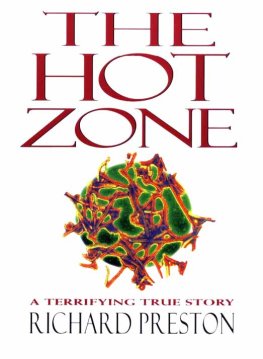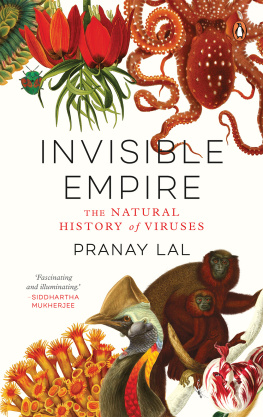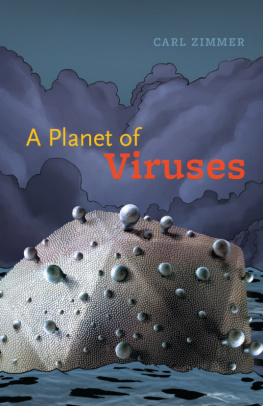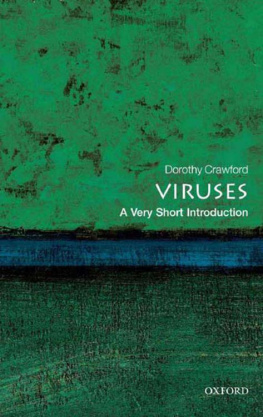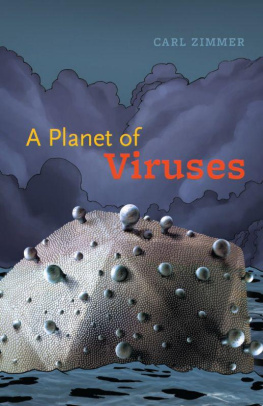VIRUSES, PLAGUES, AND HISTORY
VIRUSES, PLAGUES, AND HISTORY
Past, Present, and Future
MICHAEL B. A. OLDSTONE
Revised and Updated Edition


Oxford University Press, Inc., publishes works that further Oxford Universitys objective of excellence in research, scholarship, and education.
Oxford New York
Auckland Cape Town Dar es Salaam Hong Kong Karachi Kuala Lumpur Madrid Melbourne Mexico City Nairobi New Delhi Shanghai Taipei Toronto
With offices in
Argentina Austria Brazil Chile Czech Republic France Greece Guatemala Hungary Italy Japan Poland Portugal Singapore South Korea Switzerland Thailand Turkey Ukraine Vietnam
Copyright 2010 by Michael B. A. Oldstone
Published by Oxford University Press, Inc.
198 Madison Avenue, New York, New York 10016
www.oup.com
Oxford is a registered trademark of Oxford University Press
All rights reserved. No part of this publication may be reproduced, stored in a retrieval system, or transmitted, in any form or by any means, electronic, mechanical, photocopying, recording, or otherwise, without the prior permission of Oxford University Press.
Library of Congress Cataloging-in-Publication Data
Oldstone, Michael B. A.
Viruses, plagues, and history: past, present, and future / by Michael B. A. Oldstone. Rev. and updated ed.
p. cm.
Includes bibliographical references and index.
ISBN 978-0-19-532731-1
1. Virus diseasesHistory. I. Title.
RC114.5.O37 2010
616.9dc22
2009003550
1 3 5 7 9 8 6 4 2
Printed in the United States of America
on acid-free paper
For Betsy,
Jenny, Beau, and Chris
and six sweethearts,
Caroline Anne
Aileen Elizabeth
Madeleine Rose
Faye Annastasia
Raina Elizabeth
Marilee Kate
You need not fear the terror by night,
nor the arrow that flies by day,
nor the plague that stalks in the darkness.
91st Psalm
PREFACE
My book, Viruses, Plagues, and History, is now modified to include three new plagues that play important roles in this twenty-first century. The first two are Sudden Acute Respiratory Syndrome (SARS), the first new plague of this century, and West Nile virus, a virus similar to yellow fever virus in being transmitted by mosquito but appearing for the first time in North America, in New York City during the late 1990s. West Nile virus is currently the most common cause of encephalitis (brain infection) in the Americas where it has now spread. Third, bird flu, or influenza virus, in which a bird hemagglutinin gene (H5) has replaced the known hemagglutinin genes of human influenza virus (H1, H2, or H3), is lethal for nearly two-thirds of humans hospitalized or seriously ill with this infection. Bird flu has now migrated on the wings of its avian hosts and/or by shipment of poultry initially from China, throughout Asia to Europe and while not yet in the Americas, its arrival is imminent.
Considerable insight concerning understanding those plagues previously discussed and containment of several such viruses has been made over the last decade. These advances are presented here. Also discussed is the dampening of prior euphoria that poliomyelitis virus and measles virus would be eliminated as targeted by the World Health Organization (WHO) in the early twenty-first century. Although containment of such infections has been remarkable, elimination has not occurred. Similarly, cows with bovine spongiform disease (mad cow disease) have now been found in North America and raise alarms about the safety of the beef supply. Lastly, while the complete genomic structure of influenza 1918/1919 fossil virus has now been reconstructed and the virus manipulated to cause infection, conclusions of how and why the 1918/1919 flu was so lethal is still a puzzle to solve.
Conflicts between culture, politics, and government versus science have continued. Unfortunately, science is most often poorer and a loser for it being often overruled by faith, myths, and ignorance. This results in the continuation and increased incidence of disease and greater susceptibility of populations rather than disease control. Nevertheless, the incredible advancements in detective virology, therapeutics, and understanding basic functions of the immune system, the genetics of viruses and their hosts, coupled with the continued dedication of newly entered investigators and scientists to join ranks of those already present gives optimism that public apathy and misguided governmental decisions (like denial by some in South African government in leadership roles that AIDS is caused by a virus or that antiviral therapy is of value) will fall in time.
This book was conceived in the spirit of Paul deKruifs book Microbe Hunters, which I first read in junior high school. His heroes were the great adventurers of medical science who engaged in a struggle to understand the unknown and relieve human suffering. In retrospect, those stories initiated the spark that led me to medical school and a career in biomedical research. From those opportunities, I came to know Frank Dixon, Bernie Fields, Hilary Koprowski, Jonas Salk, Albert Sabin, John Enders, Tom Weller, Frank Fenner, Joe Smadel, Bernie Moss, Joe Esposito, Bob Shope, Fred Murphy, Bob Gallo, Luc Montagnier, D. A. Henderson, Jordie Casals, Rob Webster, D. Carlton Gajdusek, Joe Gibbs, Stanley Prusiner, Bruce Chesebro, Jeffery Taubenberger, Peter Palese, Ed Kilbourne, Yoshi Kawaoka, Gary Nabel, Ian Wilson, and James Paulson, all of whom figure in the stories told here about viral diseases.
In tracing the history of struggles to find each agent of these diseases, I have asked what was known from its initial description, what unique problems existed, what actions were the most critical in solving the problems, why these decisions were made, and at what point community and governmental support provided the essential resources or stood in the way of progress. To accomplish this task, I selected as examples four viral diseasessmallpox, yellow fever, measles, and poliomyelitisthat science has controlled despite the unrestrained devastation and misery they once caused. These success stories are contrasted with those of seven viral infections that currently remain out of controlLassa fever virus, Ebola virus, Hantavirus, SARS, West Nile virus, and human immunodeficiency virusand with the continuing threat from influenza, now reasonably contained but with the potential to revert to a worldwide pandemic disaster. I also tell the story of an unusual group of progressive neurologic disorders, the spongiform encephalopathies (scrapie, mad cow disease, variant CreutzfeldtJakob disease, chronic wasting disease of deer and elk), and the debate as to whether they are caused by a virus or a prion (protein). A common thread of fear, superstition, and irrational behavior runs through all twelve stories, testifying to our human fallibility. Unsubstantiated rumors or beliefs that the poliovirus vaccine was the cause of HIV, that autism results from vaccination with measles virus, and so forth, have led to refusal to take vaccines with resultant outbreaks of virus infections that should not have occurred. However, the motivation and skill of scientists along with the right community and governmental leaders and support have led to important victories over some viral plagues, and there will be more.
This book commemorates the enormous magnitude of these achievements too often forgotten. Recall that smallpox killed over 300 million people in the twentieth century alone and now has been totally eradicated from our planet. Measles, which once killed millions each year globally and still kills roughly 400,000 in Third World countries, today harms few in the industrial countries of the world. Yellow fever virus devastated populations along the Mississippi River and several port cities in the United States and was responsible for closing operations of the American government in 1793. Now this infectious disease has been largely eradicated from the United States with only a handful of cases imported into the country, although it still exists in rain forests of South America and Africa. Poliomyelitis virus, the cause of infantile paralysis, was at one time the fifth leading killer of children in Scandinavia and pervasive in North America. I remember my parents fear of poliomyelitis each summer, a fear that is still vivid in the minds of many of us over fifty years of age who saw siblings, schoolmates, or friends stricken, then either die or become crippled. Yet once the American people and a private foundation as well as governments invested in scientific research, poliomyelitis was brought under control, so that in neither Scandinavia nor North America is there a case of wild-type poliomyelitis today.
Next page

